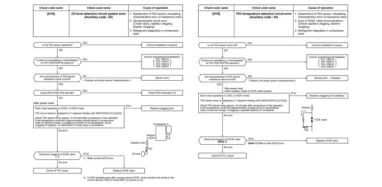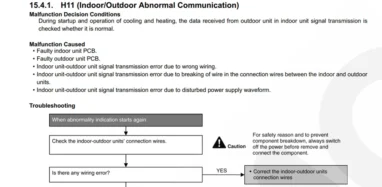Various people have different questions regarding temperature coming out of an air conditioner, refrigerator, ventilator, or any other HVAC system and they get varying answers. If you ask an expert or professional about this factor, he will surely mention a term, Delta T. Just when you were trying to get answers to your previous questions, a new one may arise as what is delta T in HVAC?
Do keep this fact in mind that knowing the exact meaning of this term is necessary as it will help you to not only measure the temperature difference but utilize your HVAC system in a much better way. Delta T fairly touches mathematics and there are a lot of things that should be studied to use it and this guide will bring you all you need.
What is Delta T in an HVAC system
To understand this term efficiently, it is essential to know the actual mathematics and physics behind this. The word “Delta” is often used in the above-mentioned subjects for the phrase “Change in”, and usually represented by ∆. The ‘T’ here represents the “Temperature”. So, in simple words, Delta T means the difference or change in temperature.
In HVAC systems, the term Delta T is defined as the difference of temperature between the supply and return of a unit. Measuring Delta T is important to proceed effectively in various operational as well as repairing aspects of an HVAC unit. The measurement is widely done by inserting a temperature sensor in a duct hole.
Delta T temperature formula
As it is clear that Delta T is the difference or change in temperature, we can easily proceed to get the actual equation or formula to measure the exact values. The formula for Delta T Temperature is as:
- T2 – T1 = ∆T
- In the above equation, the return temperature of an HVAC system is represented by T1 while the supply temperature is denoted by T2.
- Subtracting these two values will bring you the change or difference in both temperatures that will be the value of ∆T.
- For example, if you measure the return and supply temperature and they are 23°C and 14°C respectively, the value of Delta T will be derived as:
- T2 – T1 = ∆T
- 23°C – 14°C = 9°C
- So, after solving the equation we get 9°C as the value Delta T.
What is a good delta T in HVAC
Although it can vary a bit depending on various factors, it doesn’t have any big difference in different HVACs. People usually ask this question and it is essential to know a good range so that you can measure it over time and take necessary steps if required.
Most HVAC engineers and manufacturers claim that any value of Delta T ranging between -9°C (15°F) to -7°C (18°F) is appropriate. While this range is accepted by most experts, some technicians also claim that the goof value can be from -8°C (16°F) to -5°C (22°F).
Do keep this fact in mind that having values high or low from this range can sometimes be a simple disturbance due to weather or any other factors but if the issue remains still for a very long time, you should take the services of a professional to get your HVAC system examined.
What causes low delta T in HVAC
If the Delta T is low according to the normal range, it is a clear indication that your HVAC system is not performing to the fullest. It is usually caused due to the process of outdoor fin deterioration or if the airflow from the outdoor unit is not as much as it should be.
Any of these causes will not give the HVAC system the ability to get rid of heat inside the room as it doesn’t have enough airflow to dominate it. Some of the other causes that can lead to low Delta T in HVAC systems include:
- Too much airflow in the coils or evaporator.
- The metering device is not functioning properly.
- Low refrigerant levels in the HVAC unit.
- Undercharged HVAC unit.
What causes high delta T
High Delta T usually happens when the temperature either or both inside and outside the environment is relatively high. The causes of high Delta T are almost the opposite to that of low Delta T. Some of the major causes include:
- Relatively low flow of air through the evaporator or coils.
- Dirty, dusty, or clogged filter.
- Fan speed is set at the wrong level.
Where high Delta T can cause some minor issues, it can sometimes become a cause of extreme disturbances in the working of HVAC systems. Experts claim that having high Delta T also affects the energy usage of HVAC units which can dramatically increase the utility bills but this claim is currently not accepted by some professionals.
How to measure delta T HVAC
As it is briefly explained in the first section that Delta T in HVAC is calculated by a simple formula that includes the process of subtracting return temperature from the supply temperature. In the simplest form, T2 and T1 are the temperature values taken before and after the cooling coil in the HVAC system. Here we will discuss the technical steps of measuring Delta T in an HVAC system.
- Start by determining the exact initial temperature of the HVAC.
- Measure initial temperature simply with the help of a temperature-sensing device.
- Perform the same steps to determine and measure the final temperature.
- The temperature should be measured more than once after some periods to get a correct value.
- Once you have gathered values of T1 and T2, now it’s time to put these values directly in the equation (∆T = T2 – T1) and get the value of Delta T.
While measuring initial and final temperature in the HVAC system, using a temperature meter equipped with a K-Type bead sensor will make the process easy. You can simply create a small hole in the duct using a zip screw and insert the device inside. This will give you temperature but never forget to put the zip screw back after getting your job done.


